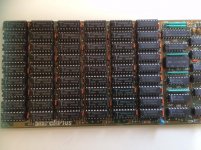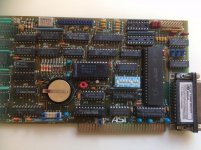SailorEd
Member
As noted in previous posts, I have also experienced the incompatibility of the SIxPackPlus board with the NEC V20 CPU chip.
Booted OK until installed board. When installed, NOTHING; only a few rotations of fan in switching power supply. Remove board and boots OK.
Wanted to install card to expand memory from main board of 256K up to 640K. I have now ordered Intel 8088 on e-bay to see if the SixPackPlus will boot on it.
It is a clone system with two floppy, HDD and no math co-processor.
Booted OK until installed board. When installed, NOTHING; only a few rotations of fan in switching power supply. Remove board and boots OK.
Wanted to install card to expand memory from main board of 256K up to 640K. I have now ordered Intel 8088 on e-bay to see if the SixPackPlus will boot on it.
It is a clone system with two floppy, HDD and no math co-processor.


